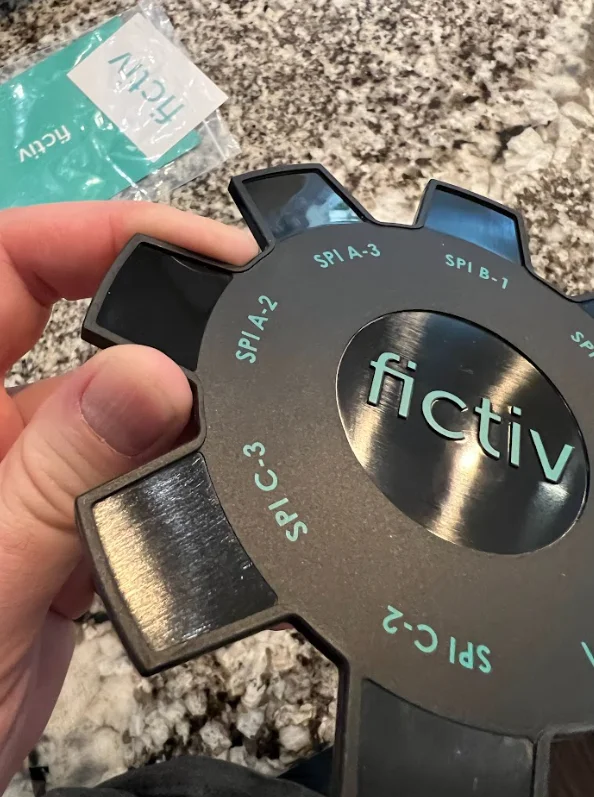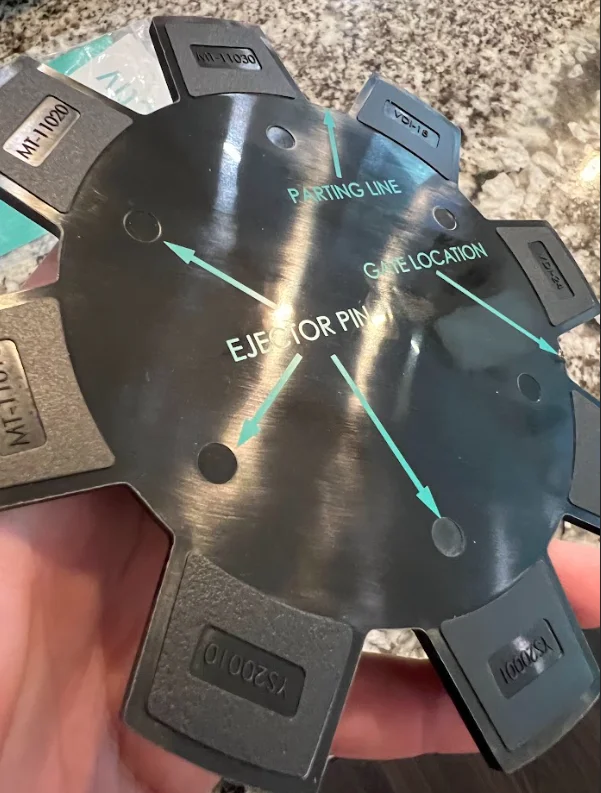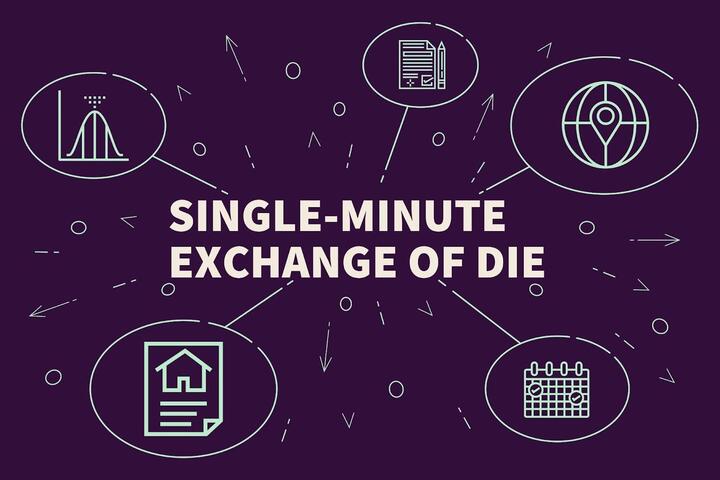Time to read: 3 min
Fictiv’s injection molding sample lets you see and feel the most popular polishes and textures for injection molded parts. This thermoplastic elastomer (TPE) sample also contains features common to all molded parts, regardless of their material or finish.
Why settle for a printed catalog when you see and feel polishes, textures, and more?

SPI Finishes
The front of the sample features a molded-in version of Fictiv’s logo along with standard SPI finishes with various polish levels. Although there are several surface finish standards, they all define polished finishes as high gloss/transparent, semi-gloss, or matte. The Society of the Plastics Industry (SPI), a U.S.-based trade association, uses A, B, and C grades to describe the finishing method and type of polish achieved.
- SPI Level A uses diamond-abrasive paper for high gloss or transparent finishes.
- SPI Level B uses grit polish paper for semi-gloss finishes.
- SPI Level C uses stone abrasive for less polished finishes.
There are numbered callouts within each lettered grade, and each callout has different attributes.
- SPI A-1, A-2, and A-3 are the highest levels of mold polishing. They need a hardened steel mold.
- SPI B-1, B-2, and B-3 are the middle levels of polishing. Lines from sanding are still evident in this class.
- SPI C-1, C-2, and C-3 are rougher with evident lines from stone finishing but are also the fastest and least expensive to produce.
Remember that there are hundreds of different options within each surface finish standard. Fictiv’s design for manufacturability (DfM) assistance can help you make the right choice.

VDI, MT, and YS Textures
The back of Fictiv’s injection molding sample features textures that correspond to standards from the Society of German Engineers (VDI), Mold-Tech (MT), and Yick-Sang (YS). Like SPI, VDI is a well-known trade organization. MT and YS textures are defined by the companies they’re named after instead. All three types of textures are produced with different methods.
- VDI textures are applied directly during mold making with electro-discharge machining (EDM).
- MT textures are produced with a chemical engraving and laser etching process but are often made in house with equivalent media blasting techniques.
- YS textures are produced with a chemical engraving and laser etching process but are often made in house with equivalent media blasting techniques.
More Injection Molding Features
It doesn’t matter whether your mold is made of aluminum or steel. As a designer, you need to understand parting lines, ejector pins, and gates that could affect the look and feel of your part. Fictiv’s injection molding sample makes it easy to see how these standard injection molding features would appear on your design.
- The parting line is where the core and cavity separate after an injection molding cycle is complete. It’s sometimes called a witness line because it leaves behind evidence of this separation.
- Ejector pins push against the surface of a part to release it from the tool. Because the ejection process usually leaves a mark, it’s better for the pins to contact a less visible part surface.
- Gates are openings in the mold that allow molten plastic to enter the cavity. They require trimming because the plastic solidifies at the gate and protrudes from the part’s surface.
Fictiv’s Injection Molding Sample Plus DfM Assistance
Fictiv’s injection molding sample is designed to show you the possibilities for your next injection molding project. If you’re ready to get started and want expert DFM feedback along the way, create your free Fictiv account and upload your part design today.










